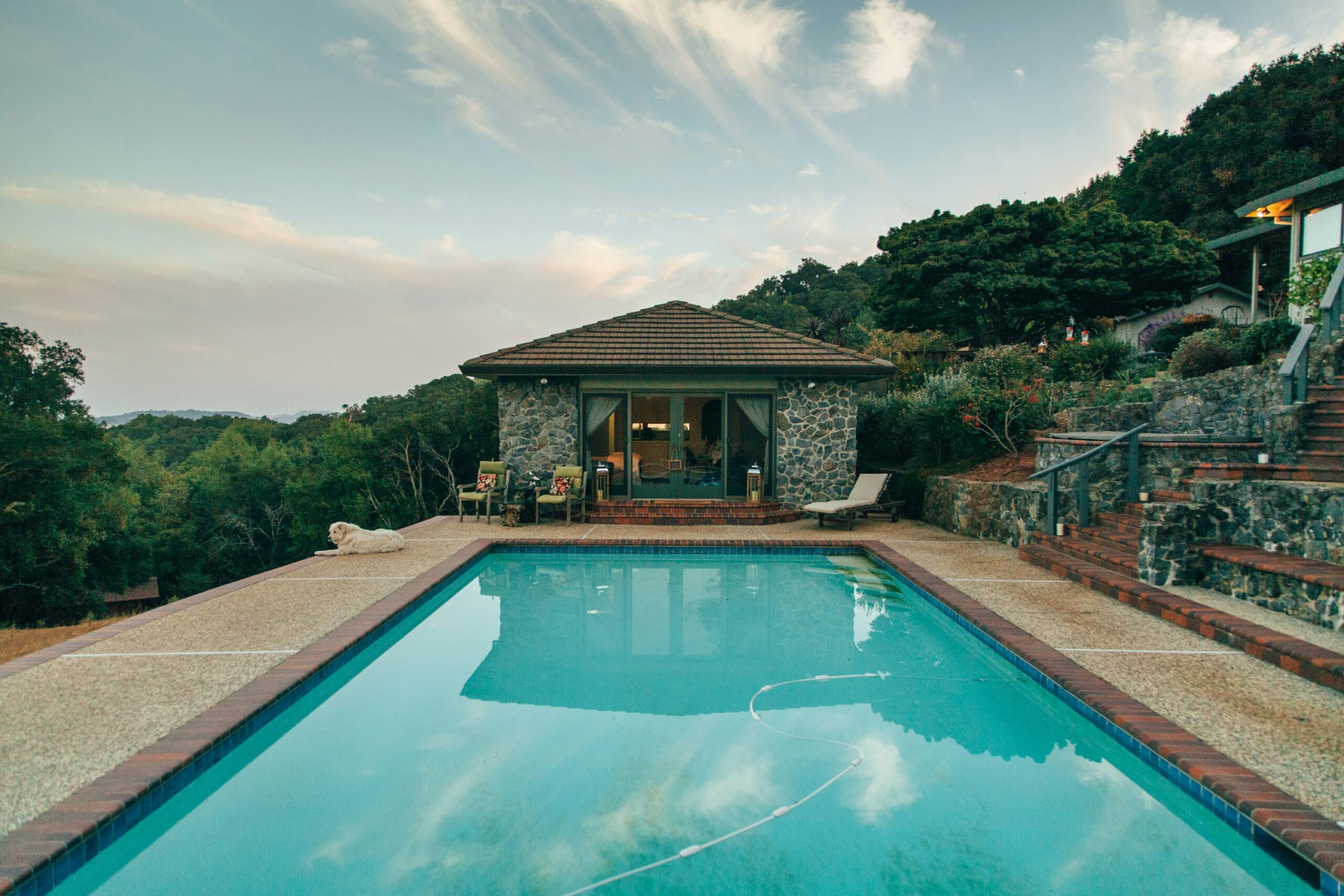
Swimming pools are a luxury many homeowners and hospitality businesses in Nigeria and West Africa increasingly embrace. Whether it’s a private pool in a residential home, a community pool, or a resort-style pool in a hotel, maintaining the water quality is essential for ensuring a safe and enjoyable swimming experience. One of the most critical aspects of pool maintenance is understanding and managing the pH levels of the water. In this article, we’ll explore what pH is, why it matters, and how you can effectively maintain your swimming pool’s pH levels, especially in Nigeria and West Africa’s unique climate and environmental conditions.
What is pH and Why is it Important?–
pH is a measure of how acidic or alkaline a substance is, and it is measured on a scale from 0 to 14. A pH of 7 is considered neutral, while values below 7 are acidic and values above 7 are alkaline. For swimming pools, the ideal pH range is between 7.2 and 7.8. This range ensures that the water is comfortable for swimmers, prevents damage to pool equipment, and allows chlorine (or other sanitizers) to work effectively.
When the pH level is too low (acidic), it can cause:
*Skin and eye irritation for swimmers.
*Corrosion of metal pool components, such as ladders and pumps.
*Etching of plaster and concrete surfaces.
On the other hand, when the pH level is too high (alkaline), it can lead to:
Cloudy water due to reduced chlorine effectiveness.
Scale formation on pool surfaces and equipment.
Skin and eye discomfort.
In tropical weather, where temperatures are often high and dust, debris, and rainwater can frequently enter pools, maintaining proper pH levels becomes even more challenging but equally important.
Factors Affecting pH Levels in Nigerian and West African Pools–
* High Temperatures and Sunlight
The hot climate in this region can cause water to evaporate quickly, leading to a concentration of minerals and chemicals in the pool. This can cause pH levels to rise. Additionally, sunlight can break down chlorine, reducing its effectiveness and indirectly affecting pH balance.
*Frequent Rainfall
Rainwater is naturally slightly acidic, with a pH of around 5.0 to 5.5. During the rainy season, heavy downpours can dilute pool water and lower its pH, making it more acidic.
*Dust and Debris
Harmattan winds and dry weather bring dust and sand into pools, which can affect water chemistry. Dust particles can introduce impurities that alter pH levels.
*High Usage
Pools in hotels, resorts, or community centers often experience high usage, especially during holidays and weekends. Private pools could also experience a spike in usage when you host parties or entertain large groups. Swimmers introduce sweat, oils, and other contaminants, which can impact pH levels.
*How to Test and Adjust pH Levels
Regular testing is the key to maintaining proper pH levels. Here’s how you can do it:
Test the Water–
Use a pool testing kit or pH strips to measure the pH level. Test the water at least twice a week, or more frequently during periods of heavy use or extreme weather. Digital pH meters are also available and provide more accurate readings.
Adjusting pH Levels–
If pH is too low (acidic): Add a pH increaser, such as sodium carbonate (soda ash), to raise the pH. Follow the manufacturer’s instructions for the correct dosage based on your pool’s size.
If pH is too high (alkaline): Add a pH decreaser, such as sodium bisulfate or muriatic acid, to lower the pH. Again, follow the instructions carefully to avoid over-correction.
Monitor Total Alkalinity
Total alkalinity (TA) acts as a buffer for pH, helping to stabilize it. The ideal TA range for pools is 80-120 ppm (parts per million). If TA is too low, pH can fluctuate wildly. If TA is too high, it can cause pH to rise. Use alkalinity increasers or decreasers as needed.
Tips for Maintaining pH Levels in Nigeria and West Africa
Cover Your Pool
Using a pool cover can help reduce evaporation, keep out dust and debris, and minimize the impact of rainwater. This makes it easier to maintain stable pH levels.
Regular Cleaning
Skim the pool surface, vacuum the bottom, and clean the filters regularly to remove dirt and debris that can affect water chemistry.
Shock the Pool–
Shocking the pool involves adding a large dose of chlorine to kill bacteria and algae. This should be done weekly or after heavy use. Shocking can temporarily affect pH, so test and adjust pH levels afterward.
Use Stabilized Chlorine–
In sunny climates, stabilized chlorine (with cyanuric acid) is recommended because it resists degradation from UV rays, ensuring consistent sanitization and pH stability.
Seek Professional Help–
If you’re unsure about managing your pool’s chemistry, consider hiring a professional pool maintenance service. They can provide regular testing, cleaning, and adjustments to keep your pool in top condition. Contact Water Lords to see how we can help.
The Benefits of Proper pH Maintenance–
Maintaining the correct pH level in your swimming pool offers several benefits:
Health and Comfort: Proper pH levels prevent skin and eye irritation, making swimming more enjoyable.
Equipment Longevity: Balanced pH protects pool equipment and surfaces from corrosion and scaling, saving you money on repairs and replacements.
Effective Sanitization: Chlorine works best within the ideal pH range, ensuring your pool remains free of harmful bacteria and algae.
Crystal-Clear Water: Balanced pH keeps your pool water clear and inviting, enhancing its aesthetic appeal.
Conclusion
In Nigeria and West Africa, where swimming pools are a popular feature in homes, hotels, and resorts, maintaining proper pH levels is essential for ensuring a safe, clean, and enjoyable swimming environment. By understanding the factors that affect pH, regularly testing and adjusting the water, and following best practices for pool maintenance, you can keep your pool in excellent condition year-round. Whether you’re a homeowner or a hospitality professional, taking the time to care for your pool’s pH levels will pay off in the long run, providing a refreshing oasis for everyone to enjoy.

